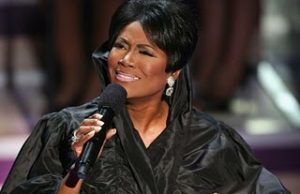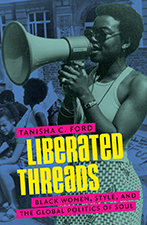Less Is Not More
When I was growing up in the 1970s, my parents worked for a magazine distribution company in Chicago. My dad was a diesel mechanic and my mom labored in the office with a group of fun, mouthy women. One of the major perks of this gig was that on Fridays, they (and often we) got to walk down to the warehouse to select free magazines. The guys there would tear the front covers off (to prevent resale), bundle the magazines, wrap them in twine, and off we would go with our stacks of paper treasures.
My sister and I spent many weekends curled up on the sofa drinking pop and devouring Tiger Beat, Teen Beat, 16 Magazine, TV Guide, People, and other titles. Our Saturday mornings were devoted to cartoons, Twinkies, and milk, but our nights—and our dreams—were full of heartthrobs Leif Garrett, Scott Baio, and Shaun Cassidy. (Me: “Isn’t Shaun dreeaammmy?” Tanya: “Gross. I’ll take Chachi any day.”) One of our favorite magazines was not a teen periodical but rather Apartment Life, which later became the more sophisticated Metropolitan Home. It was in the pages of the somewhat hippy-dippy Apartment Life that my dad and I found the plans that inspired the cool loft bed he built for me.
These childhood magazine adventures spawned my lifelong appreciation of the printed magazine as a (now dying, thanks to the Internet) cultural form, information tool, and trusty source of entertainment. Beyond stimulating our girlish crushes, immersion in our beloved monthlies also fostered an addiction in both my sister and me to home decorating magazines, what we like to refer to as “house porn.” For years, we have both routinely ripped out pages (or fragments of pages) of the best ideas for vibrant paint color, creative flooring, unusual furnishings, and “how to” tips and stuffed them into folders for eventual remodels.
Given my enduring love affair with magazines and the constant search for fresh material, I was excited to discover a new print resource, More, a few years ago. Marketed as a magazine for women over 40, I decided in my late thirties to give it a whirl. As I jokingly told a slightly older friend, I wanted to prepare for turning the big 4-0 and felt that More would provide me with useful advice, instructions for dressing like a professional, and help with my finances as I approached middle-age. My friend, who was inching toward 50 and AARP membership eligibility, was not amused by my blithe attitude toward a magazine she already read enthusiastically.
Initially, I quite enjoyed More. I discovered new fiction and nonfiction, not to mention dazzling OPI colors. I relished smart interviews with famous women like Susan Sarandon and not-so-famous women who were leaving their urban jobs to run apiaries and dairy farms. I loved that the magazine recognized that so many of us are mothers and also working women, that we are simultaneously staid professionals and creative renegades, and that we are grown-ups but with playful sensibilities. I felt invigorated, encouraged, and understood; More was like a friend with a cocktail in her hand. Most importantly, when I read the magazine I rarely heard that little voice that wafts from the pages of most women’s periodicals like scented inserts, the one that tells me I’m too fat, too ugly, and too old.
The women featured in More motivated me, at least for a while. I cultivated a grown-up wardrobe and abandoned some of the tired pieces that had seen me through graduate school. I got serious about skin care, including sun protection, and to this day diligently wash, tone, moisturize, and spot-treat problem areas. (Of course, my goal is overall skin health and not trying to make my face look like the ass skin of a newborn.) I fulfilled a childhood dream of driving a racecar for my fortieth birthday, an achievement surely befitting a do-it-all More woman. I took charge of my finances—or attempted to, but faced a litany of challenges on this front. I probably would have done these things anyway; my mid- to late-thirties was a time of great transformation, as this period is for many women. But reading More made me feel like I was on the right track.
Then something strange happened to More: it morphed. The pages became even shinier and the models appeared even younger. The revolutionary notion that the magazine was marketed to women over forty seemed to fade into the background like retouched cellulite in a photo shoot. Advertisements for cosmetics appeared more frequently alongside a never-ending parade of articles about self-improvement. It seemed that every issue was about reinvention, exclamation point. (Reinvention!) But the women profiled were rarely single moms struggling to survive on one paycheck; they were well-off women “starting over” in San Miguel de Allende or Tuscany or some other exotic location.
Month after month, More arrived in my mailbox. And month after month, I opened its pages with both excitement and trepidation. Subtly, the tagline changed from women over forty to “women of style and substance.” Occasionally I would be pleasantly surprised by a smart feature on a savvy woman, but soon I began to hear the voices trying to persuade me that my life could be better if I purchased the right skin cream or grew my IRA or quit my job to start a jewelry-making business. There I was, barely scraping by financially, fueled by hot rage at my ex-husband, and feeling pretty darn good about how I was nonetheless holding it all together. And then shazam! Along came More to warn me I was substandard, or just not trying hard enough, if I did not embrace a constant state of self-betterment.
As I write this, the current issue of More lies (sic) beside me. Molly Sims, who was born in 1973, smiles brilliantly on the cover. She glows with a healthy vitality that I’m sure she comes by naturally. And the text superimposed over strands of Molly’s gloriously golden, Fairy Tale princess locks? REINVENT YOURSELF, followed by Make Over Your Metabolism, Start a Biz for $150, and Live & Work Abroad. The first few pages contain ads for Cover Girl, Athleta, Elizabeth Arden, and Olay. Page 16 features Joan Cusack, who I admire, but page 17 is all about Crystal Light. Now that I’m 44, of course I appreciate learning about vaginal creams (from Pfizer, page 31), and it’s wonderful to imagine that I, too, might one day own a boutique in Cambodia (page 84), but the stream of diet ads peppered throughout this issue frankly just made me hungry.
I was dutifully alerted several weeks ago that my subscription to More would expire; I did not renew and indeed, took a sinister delight in tossing the letter and return card into the recycle bin. The Molly Sims/reinvention/metabolism issue just might be my last. And good riddance, I say. My life is surprisingly good these days: I have fantastic children, I make an excellent salary and have wrestled my finances back into submission, and I have a handsome, reliable, incredibly patient partner whose foibles are relatively few. I’ve been writing and publishing my work, traveling to fun locales such as Denmark and Norway, hanging out with my daughters, and failing to achieve a fairly mundane list of New Year’s resolutions (find time for my friends, drink less, exercise more, avoid yellow cheese, blah blah blah).
For the first time in decades, I do not feel the need to profoundly turn my life upside down for greener grass. I would much rather spend my precious down time, what little there is after the kids are in bed and the wine has been poured, reading about women who are changing the world, one act and one community at a time. I would love to learn about women who have figured out how to thrive, and not merely to survive, with limited resources and a heap of imagination, like the women profiled in my newest find, the illuminating Where Women Create. The world is a seriously tough place right now; I need stories about everyday heroes and moments of exquisite beauty and hope, not about blatant commerce and self-improvement for the sake of, well, itself.
I want less, not More, of the crap. And I want more, not less, of the stuff that matters.








4 Comments